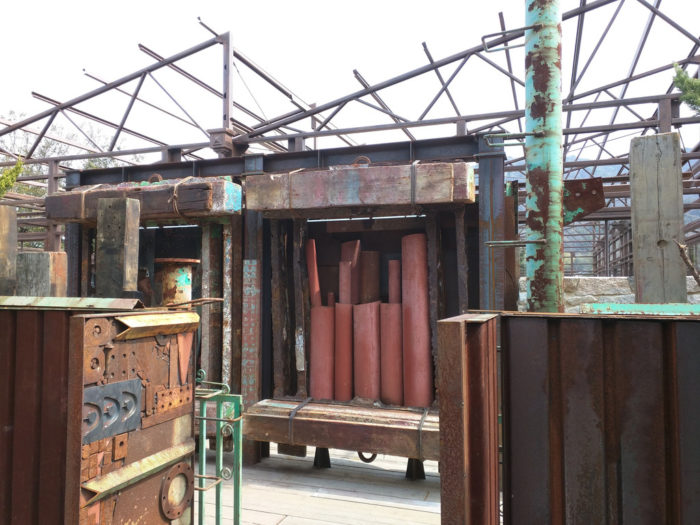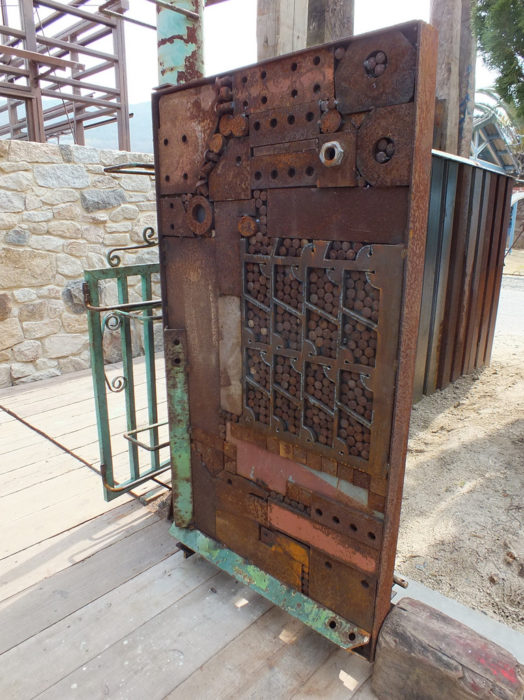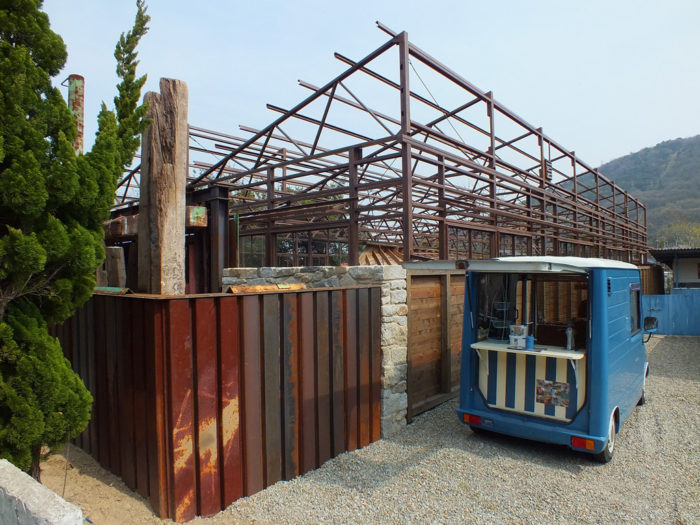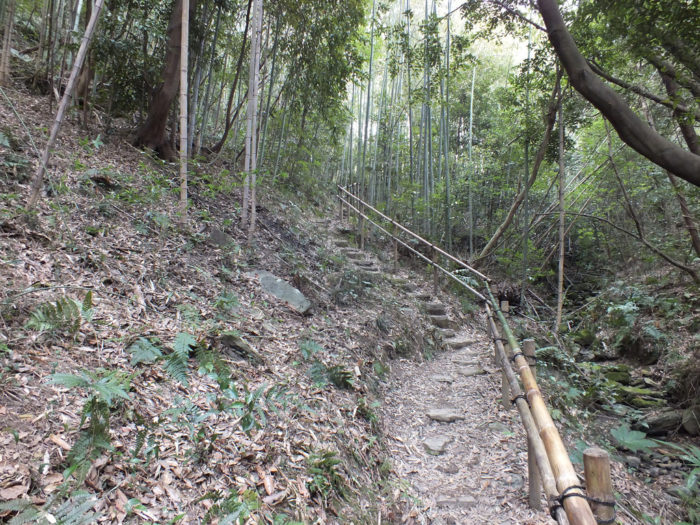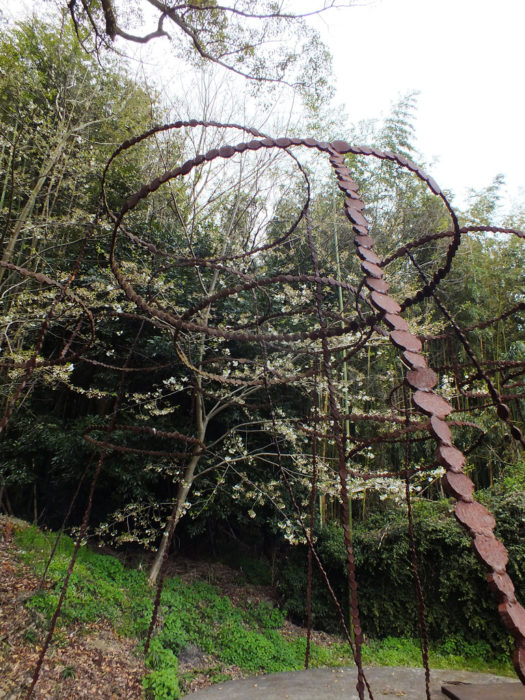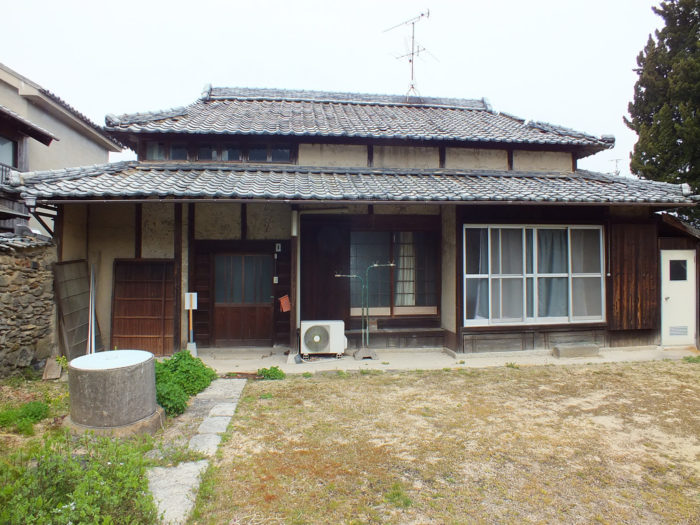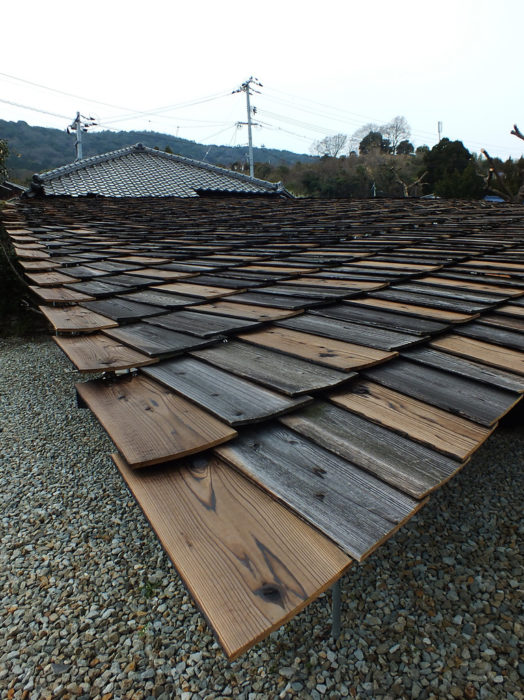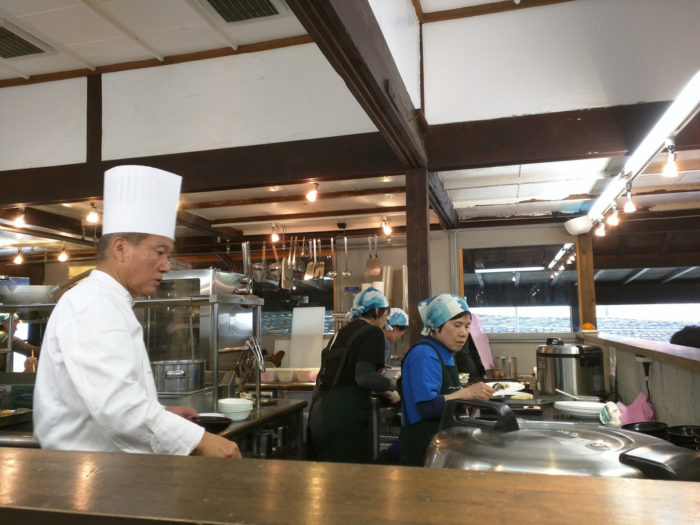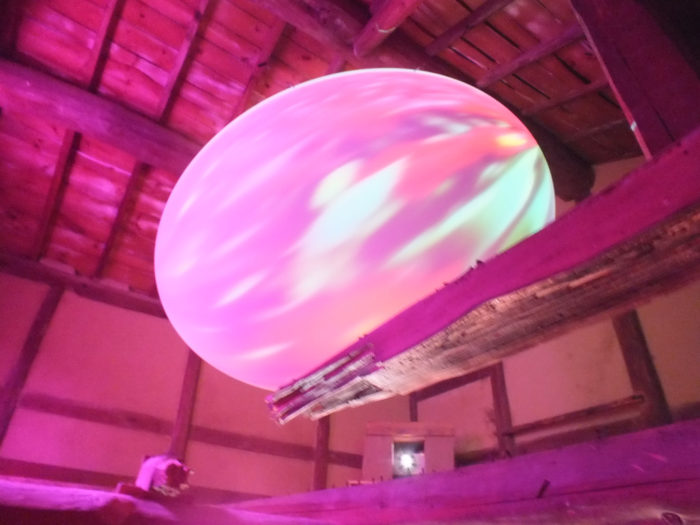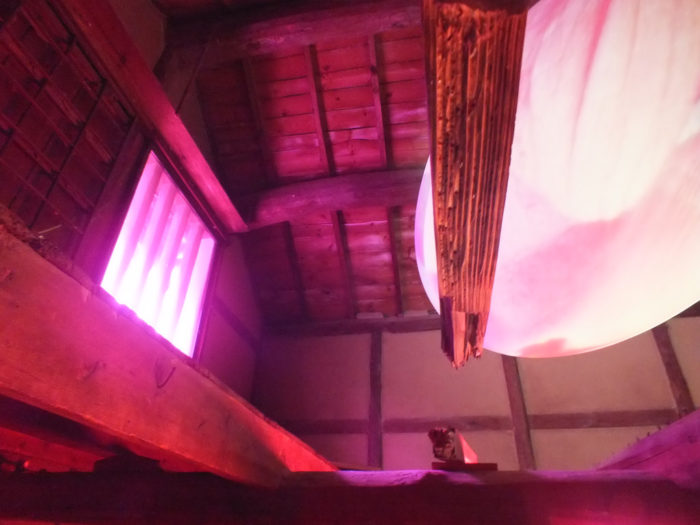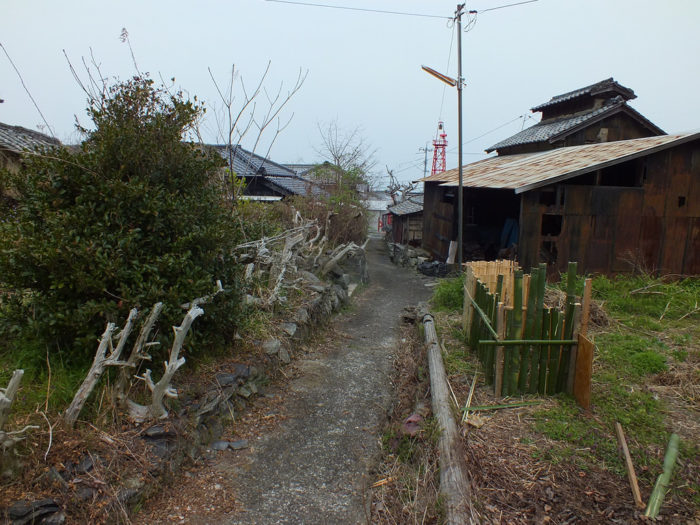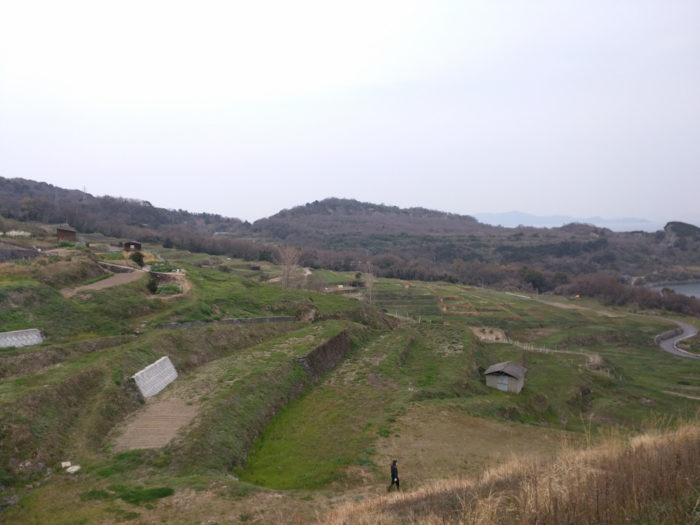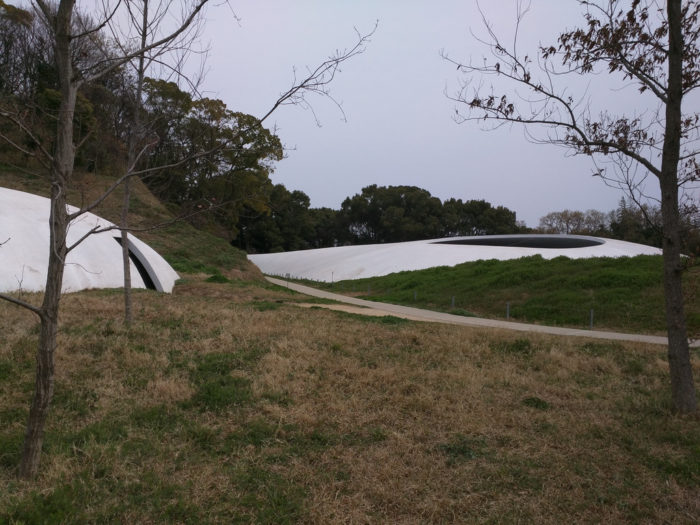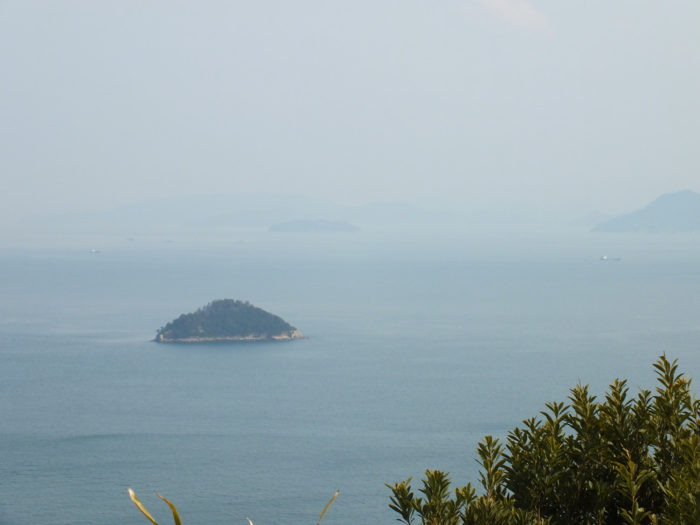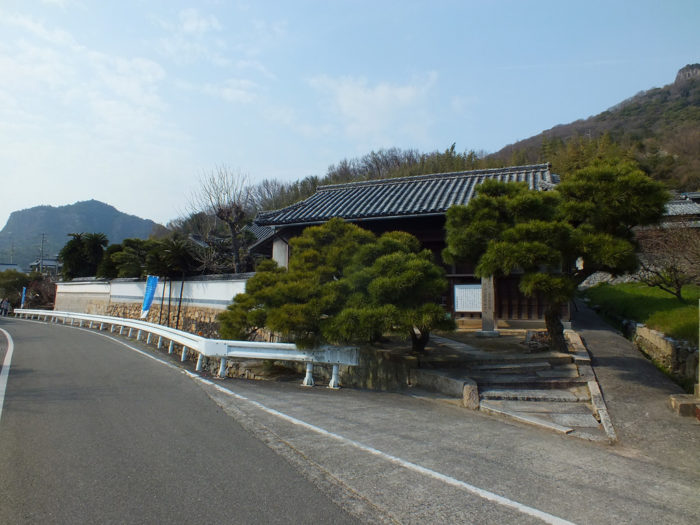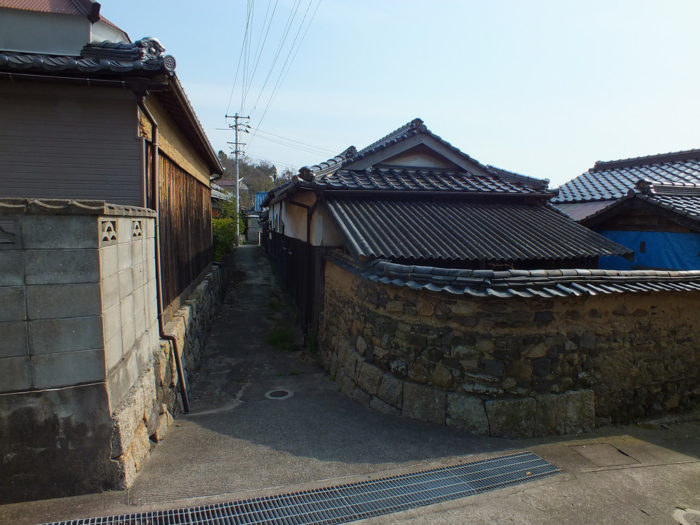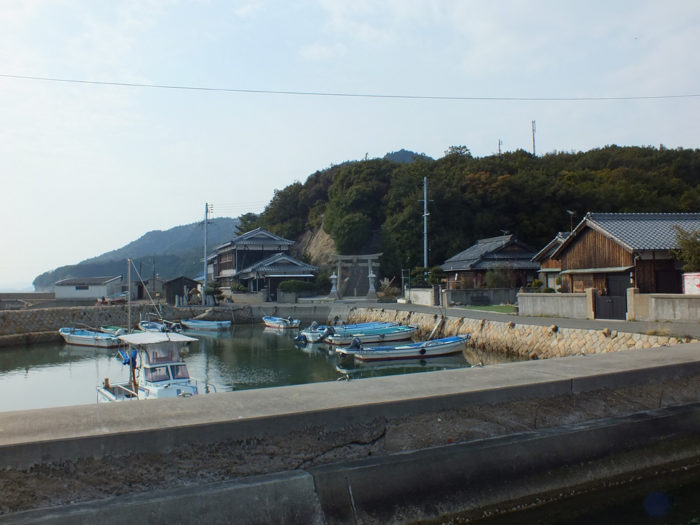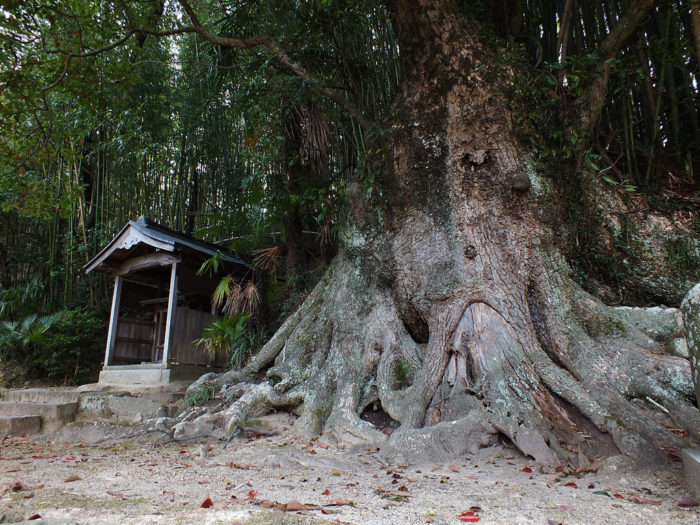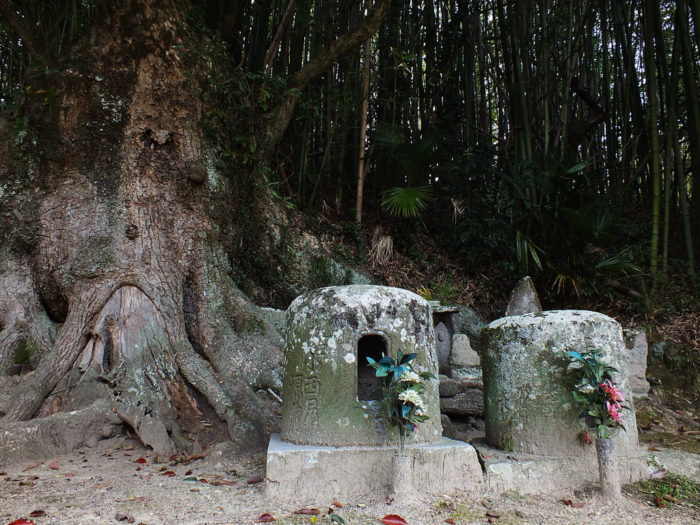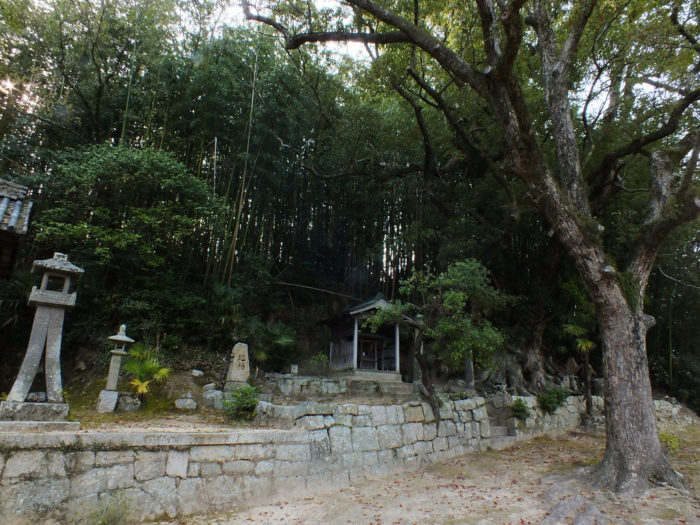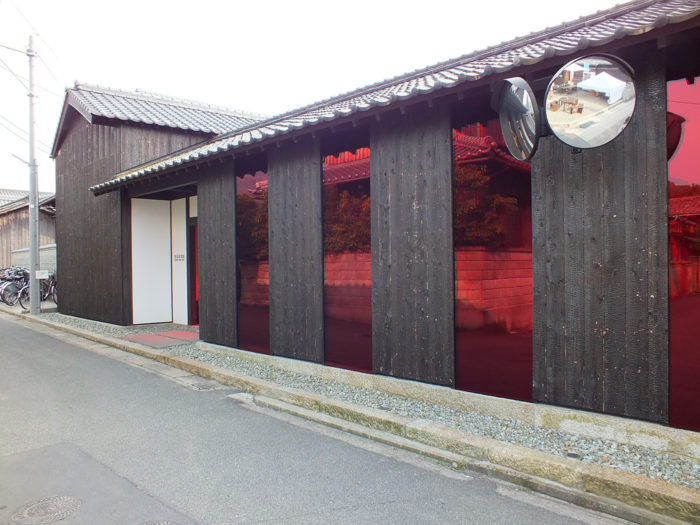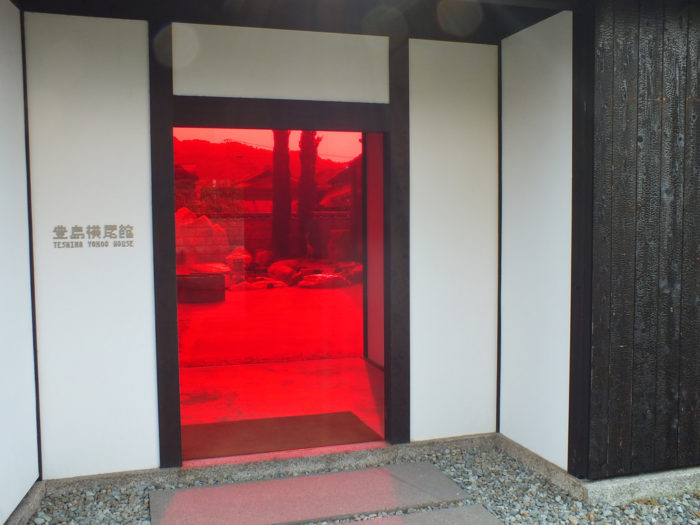A few days after visiting Inujima and Teshima, we went to… Teshima! Again.
However, it’s a different “we”. This time, I didn’t go with my family, but with my friend Cathy Hirano, who also co-writes an awesome blog about Takamatsu and its surroundings. It goes without saying that I warmly advise you to read it. And as it was the first time in five years that I went to the island without either my kids or my parents, we could visit the island on rental electrical bikes. It is, in my opinion, the best way to visit Teshima. And actually, I found out that they now also rent bikes with children seats. So this Fall, maybe we’ll get to go with the kids and ride bikes at the same time. We’ll see.
A small anecdote. As we were on the boat heading to Teshima and were chatting about everything and nothing, but mostly about the Fukutake Foundation, the man sitting facing us suddenly responded to us with a perfect English! Remember people, it’s not because very few Japanese people speak fluent English that none of them do, so be mindful of what you say in public. In that case, it was a good thing that he followed all of our conversation as he was an art teacher at the University of Kyoto and a quite important art critic. He gave us a bunch of fun facts, tidbits and even a few inside information about the Foundation and a few artists. I’ll try to include them here and there when needed.
After arriving in Ieura port and renting the bikes, we headed to one of the new artworks on the island, that is Shinro Ohtake‘s Needle Factory. And as it has become a habit with the artworks belonging to the Fukutake Foundation, pictures are not allowed inside (if you wonder why I don’t often talk about some of the famous places in the Setouchi Islands, here is your answer: I’d have nothing to show).
It’s a quite surprising artwork for who knows Shinro Ohtake a bit (to refresh your memory, I invite you to go check out MECON, Naoshima Bath or Haisha, his three other main works in the area – there are more, actually, he’s the most prolific artist from Art Setouchi, mostly because he’s a personal friend of Soichiro Fukutake, I think). This one work is very sober compared to the other ones. It simply is the inside of a boat hull, turned over and exhibited, pretty much like a giant ready-made. I’m kind of wondering if the work will evolve with time, Ohtake adding more and more things over the months or the years, the same way, I’m pretty sure MECON is evolving (I rarely see it, but every time I do, I feel that more things have been added.
This is what it looks like from the street:
This is more reminiscent of Ohtake’s usual style.
The blue truck belongs to the building on the right – off-field – that sells snacks
(and that may also be a restaurant at certain times or on certain days).
Our next stop was an artwork that has been around since the very first festival in 2010, and I wonder if I had seen it since. It is Mariko Mori‘s Tom Na H-iu. It is located halfway between Ieura and Karato, in a part of the island called Suzuri. The artwork really is in the middle of nowhere, and it can only be reached through a slippery path in the middle of the forest:
Once there, I was really surprised to learn that pictures are not allowed anymore. This surprised me for two reasons: in 2010, one could take pictures, and also, the artwork is outdoors and taking pictures doesn’t trouble anybody’s experience. It’s most likely a question of diffusion and representation rights as very often with our islands’ artworks. I guess I’ll have to post some of my 2010 pictures one of these days.
Actually, I guess it’s a good moment to address the issue of “no pictures” which seems to be more and more the norm around here. It affects pretty much all of Naoshima and Inujima indoor artworks and it’s spreading like wildfire on Teshima too.
As mentioned just a few lines above, the main reason is diffusion and publication rights, I believe. Personally, I always respect those interdictions with just a few exceptions.
My approach of the thing is as follows:
- Will taking a picture affect my experience or other visitors’ experience of the artwork? (in other words, will I lose something from the experience while taking a picture, and will I bother anyone?)
- Will a picture be of any interest in the first place? Will it look good or interesting?
If the answer is “yes” to the first question, or “no” to the second one, I will not take pictures. Otherwise, if the answers are no and yes, why not take a picture?
Now, when I do decide to take pictures, don’t expect to see it published (with very few exceptions), if only because I want to stay in good terms with the Fukutake Foundation (I don’t think they read me, but I’m pretty sure they know I exist) and the Setouchi Triennale Executive Committee (they do know me, actually, I’m surprised no one has answered the questions in my previous post despite a larger than usual number of readers).
A few examples:
- Teshima Art Museum : I’m actually very happy that pictures are forbidden. I can’t imagine a single second visitors taking pictures left and right. The experience of the place would be ruined for everyone. If you don’t know what I mean, it’s probably because you’ve never visited. If you disagree, you’re unfit to visit the place (yes, those are harsh words, but not everything is for everyone).
- Tom Na H-iu, Phantasmagoric Alleys (Mei Pam 3 site): Honestly, I don’t really understand why pictures are forbidden there, and I have taken some when alone, but only when alone. Not so that I don’t get caught, but so that I don’t disturb anyone. However, I will not publish them here without authorization.
- Back to Phantasmagoric Alleys, I’ve never taken pictures of the original site. It would be a very easy thing to do, but the interest of such pictures is null, except spoil the surprise for future visitors.
- Storm House and les Archives du Cœur: Alright, I’ve broken the interdiction in both places, once each. Both times, it wasn’t my first visit (so I didn’t ruin my own experience) and I was the only visitor both times (I’m not disturbing nor bothering anyone). I did publish the ones from les Archives du Cœur (but will take them down if asked). I’d like to publish the ones from Storm House, but I don’t dare to. Maybe I should ask first?
But let’s return to Tom Na H-iu for a minute. The installation is a sort of menhir (the name is Celtic by the way) standing in the middle of a small pond. The thing is that it is connected to the Super Kamioka NDE, a neutrino detector, and – if I understand properly – when the machine detects some, the “stone” starts glowing. Unfortunately, I never saw it happening.
Next, we headed to Karato-oka where Noe Aoki‘s Particles in the Air welcomed us as usual:
Interesting how this sculpture that has been standing there since 2010 is nothing special, but I’m quite fond of it. Probably because it really integrates well in its surroundings that are quite beautiful (the view from it is stunning, the freshwater spring next to it, is beautiful on top of having historical value, and the small shrine is very cute – you’ll have to check out past posts about the place to see what I mean). However, I find it pretty hard to take decent pictures of it. I have taken much better ones in the past. I’ve noticed that the light matters a lot there.
In Karato-oka, I returned to Storm House by Janet Cardiff and George Bures Miller, that I hadn’t seen in quite a while. The installation consists of a house in a storm (I assume you had guessed that part already). Upon entering the building, you’re free to sit (or even stand) anywhere in the main room, and suddenly a violent storm starts occurring outside. A quite fascinating experience that reminds me of the days spent stuck at home, sometimes without power during hurricane days in Florida, a few years ago. Yes, if you’ve never been in a hurricane, this is what it feels like (except that it lasts hours, sometimes more than a day, not just 10 minutes).
Next, we went to this house:
There was nothing to see there back in late March, but it’s actually a new artwork that will open on June 1st (that’s in three days). It’s called Lemon Hotel. I don’t know much about it yet, except that I thought it’ll only be an artwork, but apparently, it’ll be a real hotel too (albeit a tiny one).
Next, we headed to Shima Kitchen, one of my favorite restaurants, period. A piece of advice, on busy days – that’s almost every day during the Setouchi Triennale – it’s better to make a reservation to eat there. You can do it by phone, but if you’re not sure what time is convenient for you to be there, a easier way is to go there first when you arrive in Karato, and you simply sign-up on the waiting list. A meeting time will be given to you, and then you can go and visit the village. You’ll also order food at that moment, which means you’ll be served pretty quickly once seated. Just don’t miss your appointment, I don’t think they’ll like that, nor if they’ll still have a seat for you.
The brand new terrace roof (it’s redone every year or so at the end of winter)
It was the first time I ate sitting at the counter at Shima Kitchen.
Great spot to see the chef and the bachans prepare the food.
In case you forgot (or didn’t know yet) on top of being an amazing building designed by Ryo Abe, it’s also a delicious restaurant where recipes for the food that is served were designed as a collaboration between a few chefs for a very big hotel in Tokyo (Marunouchi Hotel) and the old ladies from the island. Pretty much every ingredient used comes from the island. Usually there are two menus:
- Shima Kitchen Set. It varies from season to season, and consists of local fish (literally, the catch of the day) and local vegetables, as well as rice and miso soup.
- Curry Set. It’s Japanese curry. Note that I’m not usually a huge fan of Japanese curry (I don’t dislike it, I don’t love it either), but this one is probably the best that I have eaten.
My only complaint is that I have the feeling that year after year, portions seem to be getting smaller for some reason.
After this delicious lunch, we headed right behind the restaurant to revisit Your First Color (Solution In My Head-Solution In My Stomach) by Pipilotti Rist. It was only my second time seeing it, I wasn’t really convinced by it the first time. However, this time, instead of watching the sort of abstract film projected on the circular screen in the center of the room and trying to make sense of it (and not being interested by what I found), I just let the colors, and the atmosphere surround me, without really bothering with the film itself. I found the experience to be much more pleasant this way. So my advice: if you’re not a big fan of very conceptual art, just enjoy the atmosphere of the room and its colors.
Karato street
The terraced rice fields of Teshima.
If you know Teshima a little, after seeing the previous picture, you may have quite a good idea of where I’m heading next.
Of course, it’s Teshima Art Museum!
This building, designed by Ryue Nishizawa is – and I’m saying this with no exaggeration – probably my favorite building in the world. It only houses one single artwork (designed along with the building), Matrix by Rei Naito. The main component of this artwork is nature itself. If you’ve never been, I won’t tell you more, just go.
Funny how I hadn’t visited it since 2002, but this year, I went twice over a six month period and I hope to go a third time before the end of the year. However, the Setouchi Triennale may not be the best time to go, as there will be quite a few people inside with you. I will never forget that one time we had the whole place just for ourselves. However, I’m afraid that with Teshima becoming more and more famous, it will be hard to duplicate this experience.
Also, I’ll never say it again, but it’s a place where it’s very important to respect the rules so that everyone can enjoy the place. The most important may be to remain quiet. And don’t expect to see any picture of the inside from me.
If you can only see one museum when you visit the area, pick this one, before all the more famous ones on Naoshima. It’s an experience that will stay with you for a long time. For more detail, let me invite you to read this post too.
One of the advantages of visiting the island by bicycle is that one gets to enjoy one of the most beautiful roads of this part of the Seto Inland Sea, between Ko and Karato:
Still a bit misty, but the sun finally came out as we reached Ko.
Funny how I hadn’t been to Ko in almost three years and I went twice in four days (it tends to happen with this village that is so cute, but so far from everything).
On the way back to Ieura, we passed Big Bambu, another favorite of mine. However, while it can still be seen in the distance, one cannot approach it anymore (let alone climb on it), the artwork being “alive” and the bamboo having evolved all around it (new shoots have grown, older ones have died and such) the structure has become impracticable.
When entering Ieura, pretty close to Needle Factory actually, there’s a small shrine called Konpira-jinja (to not be confused with its more famous almost homonym Konpira-san) and when seeing it, Cathy and I pretty much had the same reaction:
It’s Totoro’s shrine and tree!!!
Now, don’t get me wrong, I’m not implying that the story of Totoro takes place on Teshima, not even that Miyazaki got inspired by the place (to my knowledge, he never set foot in the area). From the clues left in the film, it seems that it takes place in Saitama Prefecture. The only thing I’m referring to here is that the place looks like where Totoro lives, and only because of this old and large camphor tree on the grounds of this small country shrine. What you don’t see on the pictures is that right behind me there’s a road and the beginning of the village, we’re not exactly in the middle of nowhere.
Our last stop of the day was Teshima Yokoo House, a collaborative work between architect Yuko Nagayama and painter Tadanori Yokoo.
I’m not going to lie, I’m not a big fan of Tadanori Yokoo’s paintings (some are OK, some others… just not my taste). However, the building is all sorts of amazing. As usual, no pictures inside allowed, but the exterior can give you an incomplete idea of what to expect. This will be about light, colors and mirrors.
When you visit, make sure you look at and through all the windows, some are mirrors, some are not, and they modify reality in a pretty interesting way, for example, the way the garden looks and feels like in the mirrors is very different from what it looks and feels like firsthand.
Every time I visit it, I start imagining living in a similar house (with less flashy colors). I’m a big fan of the fish pond that runs underneath the living room for example.
Don’t miss the tower either, even if you have a fear of heights (I do).
I just realized that while I’ve been quite a few times there now (four? five times?) I pretty much always went later in the afternoon. The sun being in the opposite direction in the morning, the house must look pretty different then. I got to try to visit it in the morning next time I go.
After that, it was time to back to the port and wait in line for the boat back to Takamatsu.
One last piece of advice, when you visit Teshima during the Setouchi Triennale, especially if you want to return to Takamatsu, go back to the port well ahead of time if you want to be able to get on the boat. However, also know that there is a new boat directly linking Karato to Takamatsu if you’re on the other side of the island.
(to be continued)
